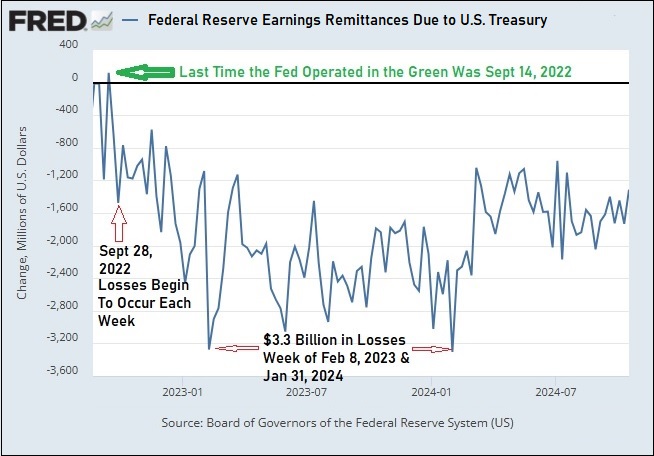Lebanon Hamas leader Fateh Sherif was employed by UNRWA, agency confirms
“Fateh Al Sherif was an UNRWA employee who was put on administrative leave without pay in March, and was undergoing an investigation following allegations that UNRWA received about his political activities,” the agency said in a statement.
Argentina prosecutors deny releasing Liam Payne toxicology tests
Argentine prosecutors on Tuesday denied releasing toxicology test results for British pop star Liam Payne, after US media reported he had multiple drugs in his system when he died. The public prosecutor’s office said the person in charge of the case had met with Geoff Payne, the father of the One Direction boy band member […]
The post Argentina prosecutors deny releasing Liam Payne toxicology tests appeared first on Insider Paper.
Americans Trust Trump on Economy, but “Experts” Don’t?
Jonathan Newman is interviewed by Andrew Wilkow.
The Secret Economic Theory Behind the $100,000 Birkin Bag
The article explores how Austrian Economics explains luxury marketing, using the iconic Hermès Birkin bag as a case study to illustrate Carl Menger’s Theory of the Good and Ludwig von Mises’ explanation of Human Action.
Jerome Powell’s Fed Notches an Historic Record of $204 Billion in Cumulative Operating Losses – Losing Over $1 Billion a Week for More than Two Years
by Pam Martens and Russ Martens, Wall St On Parade: According to its own FRED data, the last time the central bank of the United States – the Federal Reserve – operated in the green was September 14, 2022, more than two years ago. Since then, it has been consistently losing over $1 billion a week […]
Two Weeks Before The Meltdown Begins
Two Weeks Before The Meltdown Begins
Authored by Frank Miele via RealClearPolitics,
I wouldn’t be much of a political pundit if I weren’t willing to share my prediction for what will happen in 15 days when one of the most important presidential elections in history is decided.
So here goes: Donald Trump will win, and he will win convincingly. But that doesn’t mean the progressive left won’t have a meltdown. Just as in 2016, when Trump was first elected president, the media will be dismayed, the Democrats will be shocked, and there will be protests in the streets, possibly violent. Congressional Democrats such as Jamie Raskin will try to prevent Trump from being sworn in by declaring him an insurrectionist.
Seven so-called battleground states are supposed to decide the election: Pennsylvania, Michigan, Wisconsin, North Carolina, Georgia, Nevada, and Arizona. But even more important will be the experience of the American people, who in large measure have come to regret the election that put Joe Biden in the White House four years ago.
That is the underlying story that the media will never acknowledge. Polling within the last year shows that less than one-third of Republicans believe Biden is the legitimate president, and 36% of all Americans have doubts about the 2020 election. That is only a feeling, not a fact, but feelings decide presidential elections, and the almost gleeful anti-American thrust of Biden’s presidency has given more than 60% of potential voters a feeling that we are on the wrong track as a nation.
Five days before the 2020 election, I published a spoof that proved modestly prophetic as a warning about the pitfalls of a Democratic victory. Called “The Short Happy Presidency of Joe Biden,” it predicted that Kamala Harris would invoke the 25th Amendment immediately after Biden’s inauguration in order to seize power in a bureaucratic coup.
It didn’t quite happened that way, of course, but 3½ disastrous years later, Kamala along with Chuck Schumer and Nancy Pelosi seemingly used the specter of the 25th Amendment to force Biden to end his reelection bid. Life imitating art.
In my pastiche, President Trump had appeared close to sealing his victory in the 2020 election, thanks to late mail-in votes in Pennsylvania. But “in an emergency session, the Pennsylvania Supreme Court convenes and reverses its earlier ruling that late votes could be counted for up to three days. The new ruling asserts that late voting amounts to election interference ‘on account of Trump winning,’ thus handing the state and the Electoral College victory to Biden.”
Exaggerated, yes, but prescient in regard to how courts across the country would eventually rule in Biden’s favor on almost every issue, refusing to look at the evidence of fraud or unconstitutional irregularities.
Perhaps the most prophetic aspect of my column four years ago was how I depicted the reaction of Trump to losing a disputed election. Just two days after the inauguration of first Biden and then Harris:
Former President Donald Trump announces that he is running for re-election in 2024 after taking a four-year rest to catch up on his golf and make a few billion dollars. Trump says his new role model will be Grover Cleveland, the only president to serve non-consecutive terms. “If it’s good enough for Grover, it’s good enough for me!” Trump also tries out a new campaign slogan, as he takes a swing at Biden voters with a red, white and blue cap inscribed with “TUSA,” short for “Told U So America!”
When you think about it, that really is the underlying message that Trump has been sharing for the past four years. And Americans got the message – because it matched their lived experience. They saw with their own eyes that the wide-open Biden border was being called secure by Biden, Harris, and Homeland Security Secretary Alejandro Mayorkas. They saw that Biden’s Supreme Court nominee couldn’t say for sure what makes a woman a woman, and then they watched as boys began to dominate girls’ sports. They watched prices on the rise and safety in decline. Worst of all, they stood helpless as the world seemed to be rushing headlong toward World War III, first in Ukraine, then the Middle East, all the while as China has been threatening to cripple the world economy by attacking Taiwan.
So, yes, Trump will be elected as the 47th president of the United States, and the liberal talking heads will melt down just as they did in 2016. But what matters most is what happens after the election, and whether the experience of Americans will reflect renewed prosperity, a safer world, and respect for tradition and common sense. Many will try to prevent that, but making America great again should be a unifying goal. “Ask not what your country can do for you – ask what you can do for your country.”
And if I am wrong and Kamala Harris becomes the 47th president, I pray that divine providence takes hold of her and guides her to protect, defend, and strengthen these United States and their Constitution. Seems like a long shot, but without Trump, prayer is all we got.
Frank Miele, the retired editor of the Daily Inter Lake in Kalispell, Mont., is a columnist for RealClearPolitics. His book “The Media Matrix: What If Everything You Know Is Fake” is available from his Amazon author page. Visit him at HeartlandDiaryUSA.com or follow him on Facebook @HeartlandDiaryUSA and on X/Gettr @HeartlandDiary.
Tyler Durden
Tue, 10/22/2024 – 07:20
Russophobia, Historically Considered
Professor Glenn Diesen of Norway recently had his video channel expunged from YouTube, and two days later it was restored at YouTube, all with no real explanation. One video at…
Singapore blocks foreign-linked websites, warns against ‘hostile’ disinformation
Singapore on Tuesday blocked access to 10 websites linked to foreign actors which the government said could be used to mount “hostile” disinformation campaigns against the city-state. The move comes as Singapore prepares for elections to be held before November next year. “These 10 inauthentic websites have been observed to masquerade as Singapore websites by […]
The post Singapore blocks foreign-linked websites, warns against ‘hostile’ disinformation appeared first on Insider Paper.
Peace as a Prerequisite for Civilization
While men like Murray Rothbard and Ludwig von Mises believed in “just” war, nonetheless, they did not believe that wars lead to “just” outcomes, as war leads to destruction of civilization. The outcome of the American war of secession proved that point eloquently.
Looks like they’re already stealing cities in Michigan…
from Revolver News: Well, folks, you knew it was coming. It looks like they’re already stealing Detroit, Michigan, and we’ve got all the details for you. And yes, we’re well aware that Wayne Country always goes big for Democrats; it’s a stronghold, for sure. But we also know that Kamala is struggling with the black […]
















